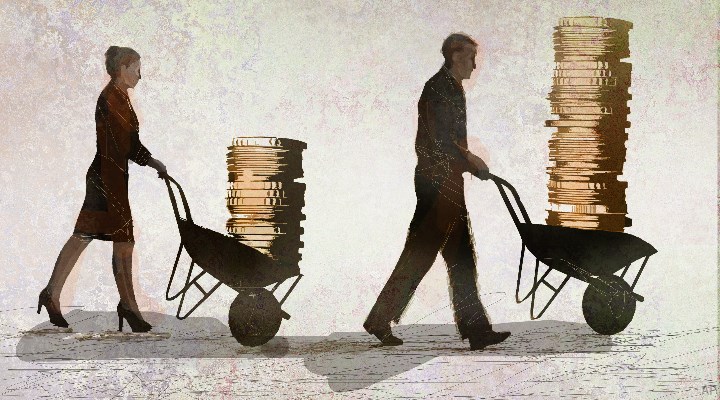
The ongoing cost of living squeeze will pressure pay packets further in April, with a raft of forthcoming tax rises.
National Insurance (NI) is set to rise, and so too will taxes paid on dividends. This will hit employees on pay as you earn (PAYE), the self-employed, and those who run their own companies.
The dividend tax increase will also hit many investors, particularly those who rely on their investments to subsidise pensions and cover day-to-day living expenses.
Alongside this, the higher and additional tax rates thresholds have been frozen. This might not mean an immediate cost come April, but over time more people will be dragged into higher brackets, and particularly if they get pay rises amid rising inflation.
How Much More?
From the start of the new tax year NI payments will increase by 1.25 percentage points across the board. For employees, that means the main rate of NI will increase from 12% to 13.25%.
This isn’t paid on your entire earnings. From April 6, this new rate will be applied on earnings between £9,880 and £50,270. Earnings over this will be subject to a 3.25% NI charge (up from 2%). For an employee earning £30,000 salary this will cost them an extra £214 a year; those earning £80,00 a year will pay an extra £800.
The self-employed face a similar increase, with their main rate of NI going up to 10.25% (and 3.25% for earnings over £50,270). The government claims higher tax charges are needed to cover NHS and social care costs, both of which have increased due to Covid-19.
There is a similar 1.25% increase in dividend tax rates, which will see dividends income of more than £2,000 a year taxed at 8.75% within the basic rate band, and at 33.75% in the higher-rate band. (These will be taxed at 39.35% for those in the additional rate band.)
Can I Avoid Them?
You probably can’t avoid these tax rises completely, but you may be able to mitigate some of the effects with careful tax planning.
Hargreaves Lansdown’s senior personal finance editor Sarah Coles says employees’ salary sacrifice may help reduce higher NI rates, as "effectively you and your employer agree to cut your salary and pay the equivalent sum into your pension."
As pension contributions from PAYE aren’t subject to NI this means a savings for both you, and your employer, who also pays NI on your salary.
As Coles points out, this still means your take home pay will still be reduced, but rather than paying more to the taxman you’ll be making higher payments into your pension – which you can access after the age of 55.
An example:
“If you earn £30,000, then once the NI rise has kicked in, you’ll pay £332.50 on your last £1,000 of earnings – made up of 20% income tax and 13.25% National Insurance,” she says.
“So by taking it as salary, you’ll get just £667.50 of the last £1,000. If you agree to sacrifice £1,000 of your salary into your pension, you’ll have £1,000 added to your pension instead and be £332.50 better off. The more tax you pay, the more rewarding salary sacrifice can be.”
The Downsides
However, there can be downsides, as some benefits, such as maternity pay or life insurance, are typically linked to salary. Reducing your notional pay will also reduce these benefits, and could also affect how much you’re able to borrow if you apply for a mortgage.
Robert Salter, a director at accountancy firm Blick Rothenberg, points out that for those running their own businesses, there may be scope to bring salary payments or dividends forward, so they are paid this month, rather than in April.
But again, this needs careful consideration.
“Depending on wages, this could push you up into a higher tax bracket, and paying taxes at a higher rate would certainly outweigh any savings made from avoiding these extra NICs,” he says.
Increasing pension contributions can also stop your salary going into the next band, should you get a pay rise. Clearly this is mainly of use to those whose salary is already near the higher-rate, or additional-rate threshold (see box below).
Salter says this may be tax-efficient, and needs to be considered against the wider cost of living squeeze, as paying more into a pension can reduce take-home pay.
“Many people may not feel they have the financial flexibility to pay more into their pension contributions at the moment with everyday bills rising,” he says.
Pension contributions are limited to £40,000 a year but most people do not contribute anywhere near this amount so there may be scope to increase payments. People need to ensure though they don’t breach the lifetime limit — currently £1,073,100.
There may also the option to transfer investments and income between spouses (or civil partners), particularly if one earns significantly more. This can be work well if one partner does not work, perhaps because they are currently looking after children. Transferring income can ensure both partners’ personal allowance is utilised.
“If the partners have significant investment income, for example it may be sensible to have the income in the name of the spouse with the lower income. This means that the investment income is taxed at say 20% rather than 40% or 45%,” Salter says.
The Frozen Tax Thresholds
The following thresholds will apply from April 2022 and remain the same until 2025/26:
- The personal allowance will stick at £12,570;
- The higher rate tax (40%) threshold will be frozen at £50,270;
- The additional rate tax (45%) threshold will be frozen at £150,000;
- The capital gains tax annual exemption remains at £12,300;
- The pension lifetime allowance remains at £1,073,100;
- The inheritance tax nil-rate band remains at £325,000, and the residential nil-rate band £175,000;
- The ISA allowance will remain at £20,000.





























